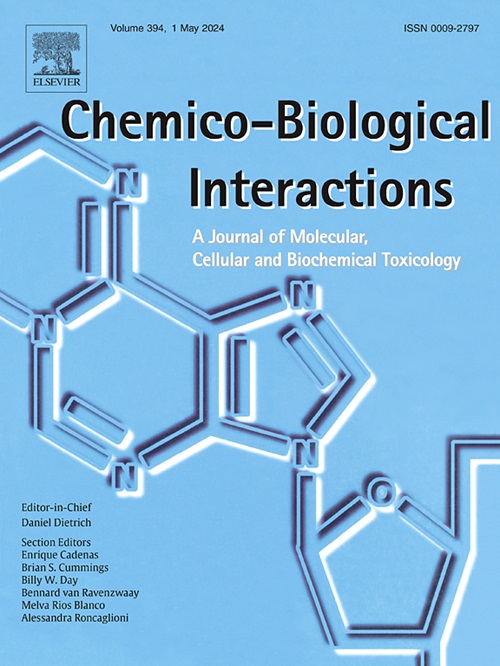铂既是药物又是其调节剂--铂纳米颗粒会影响顺铂的活性吗?
IF 4.7
2区 医学
Q1 BIOCHEMISTRY & MOLECULAR BIOLOGY
引用次数: 0
摘要
2022年,乳腺癌是女性癌症死亡的最常见原因。尽管个性化治疗的发展,化疗往往仍然是唯一可用的治疗方法。然而,经典的抗肿瘤药物,如顺铂(CDDP),往往会引起严重的副作用,并可能导致耐药性,使治疗效率低下。因此,迫切需要开发新的、有效的治疗方案。因此,我们应用铂纳米颗粒(PtNPs)来验证它们是否可以影响CDDP活性,并特别强调纳米颗粒大小的差异。我们采用了广泛的物理化学方法,包括动态光散射、原子力显微镜、等温滴定量热法、傅里叶变换红外光谱、近红外光谱和差示扫描量热法,来表征纳米颗粒与CDDP之间可能的相互作用。此外,采用肠沙门氏菌血清型鼠伤寒杆菌TA102的Ames诱变试验和乳腺癌细胞株MDA-MB-231和SKBR3的MTT试验,研究了PtNPs对CDDP生物活性的影响。结果表明,PtNPs与CDDP的直接相互作用取决于纳米颗粒的大小。尽管AFM成像和DLS没有明确证实PtNPs聚集,但进一步的物理化学方法表明,单独的纳米颗粒和PtNPs- cddp混合物之间的结构变化。此外,生物学试验证实,PtNPs降低了CDDP的诱变性,并略微增加了其对所选细胞系的细胞毒性。后一种效应是模糊的,然而,为进一步的研究提供了有价值的基础。本文章由计算机程序翻译,如有差异,请以英文原文为准。

Platinum as both a drug and its modulator – Do platinum nanoparticles influence cisplatin activity?
Breast cancer was the most frequent cause of cancer death in females in 2022. Despite the development of personalized therapies, chemotherapy frequently remains the only available treatment method. However, the administration of classic antineoplastic drugs, like cisplatin (CDDP), often causes severe side effects and may lead to drug resistance making the therapy inefficient. Therefore, there is a great need for new, effective treatment regimens development. For this reason, we applied platinum nanoparticles (PtNPs) to verify if they can influence the CDDP activity with particular emphasis on the differences due to nanoparticles’ sizes.
We employed a broad spectrum of physicochemical methods, including Dynamic Light Scattering, Atomic Force Microscopy, Isothermal Titration Calorimetry, Fourier Transform Infrared Spectroscopy, and Near Infrared Spectroscopy and also Differential Scanning Calorimetry, to characterize the possible interactions between nanoparticles and CDDP. Moreover, the impact of PtNPs on CDDP biological activity was investigated using the Ames mutagenicity test on Salmonella enterica serovar Typhimurium TA102 and MTT assay on two breast cancer cell lines MDA-MB-231 and SKBR3.
The obtained results revealed PtNPs direct interactions with CDDP dependent on the nanoparticles’ size. Despite the lack of explicit confirmation of PtNPs aggregation by AFM imaging and DLS, further physicochemical methods indicated structural changes between nanoparticles alone and PtNPs-CDDP mixtures. Moreover, the biological assays confirmed that PtNPs decrease CDDP mutagenicity and also slightly increase its cytotoxicity on the chosen cell lines. The latter effects are ambiguous, nevertheless, provide a valuable basis for further research.
求助全文
通过发布文献求助,成功后即可免费获取论文全文。
去求助
来源期刊
CiteScore
7.70
自引率
3.90%
发文量
410
审稿时长
36 days
期刊介绍:
Chemico-Biological Interactions publishes research reports and review articles that examine the molecular, cellular, and/or biochemical basis of toxicologically relevant outcomes. Special emphasis is placed on toxicological mechanisms associated with interactions between chemicals and biological systems. Outcomes may include all traditional endpoints caused by synthetic or naturally occurring chemicals, both in vivo and in vitro. Endpoints of interest include, but are not limited to carcinogenesis, mutagenesis, respiratory toxicology, neurotoxicology, reproductive and developmental toxicology, and immunotoxicology.

 求助内容:
求助内容: 应助结果提醒方式:
应助结果提醒方式:


